Crafting the Perfect Skin Care Routine for Hormonal Acne
Creating an effective skin care routine for hormonal acne involves a strategic selection of products and a consistent regimen. It’s not just about treating breakouts as they occur but preventing them through balanced skin care and lifestyle adjustments. Below, we outline the essential steps that form the backbone of an acne-fighting routine, specifically designed to address the hormonal triggers that often lead to stubborn breakouts.
You may also like: The Essential Rituals for a Natural Skincare Routine That Supports Whole-Body Wellness
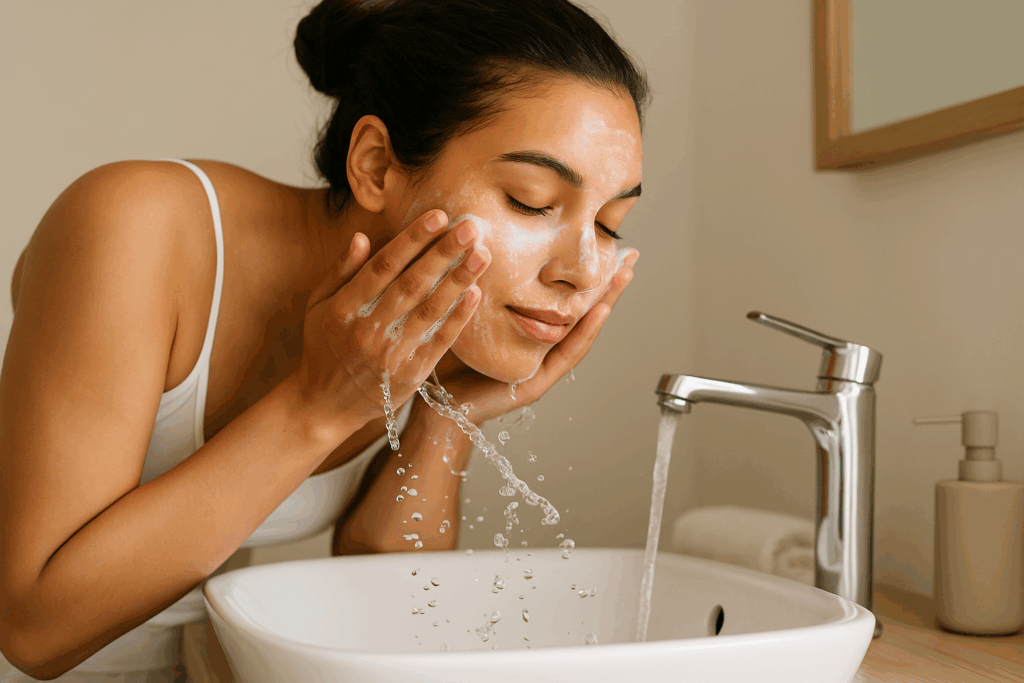
Cleansing: The Foundation of Clear Skin
The first and perhaps most crucial step in any skin care routine for hormonal acne is cleansing. Cleansing helps to remove excess oil, dirt, and impurities that can clog pores and lead to breakouts. For hormonal acne, it’s recommended to use a gentle, sulfate-free cleanser that maintains the skin’s natural barrier while effectively removing grime. Ingredients like salicylic acid or benzoyl peroxide are particularly beneficial as they penetrate deep into the pores, reducing inflammation and preventing new blemishes from forming.
It’s important to cleanse both in the morning and evening to clear away any sweat, makeup, and environmental pollutants. Over-cleansing, however, can strip the skin of its natural oils, leading to dryness and potential irritation—both of which can trigger more oil production. Therefore, striking the right balance is key.
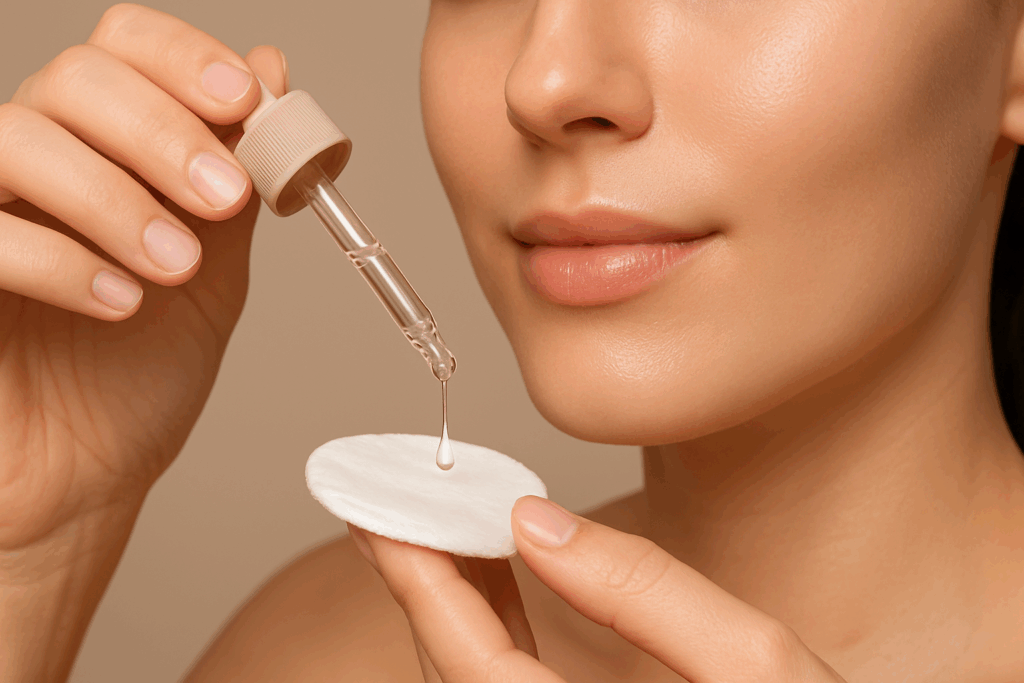
Exfoliating: Sloughing Away Dead Skin Cells
Exfoliation is another critical step in managing hormonal acne. It helps to remove dead skin cells that can clog pores and contribute to breakouts. For those with hormonal acne, chemical exfoliants like alpha hydroxy acids (AHAs) and beta hydroxy acids (BHAs) are recommended over physical scrubs, which can be too harsh and cause microtears in the skin.
BHAs, such as salicylic acid, are oil-soluble and penetrate deeply into pores to clear out excess sebum and dead skin. AHAs, on the other hand, work on the surface to remove dead skin and improve skin texture. Regular exfoliation, about two to three times a week, helps keep pores clear and reduces the likelihood of hormonal breakouts while promoting smoother, clearer skin.
Toning: Balancing and Preparing the Skin
After cleansing and exfoliating, toning helps restore the skin’s pH balance and removes any leftover impurities. For hormonal acne, it’s best to choose alcohol-free toners enriched with soothing ingredients like witch hazel, chamomile, or green tea extract. These components calm inflammation and prepare the skin for better absorption of subsequent treatments.
Toning also tightens the pores and refreshes the skin, creating a smoother surface that’s more receptive to acne treatments and serums. This step, though often overlooked, can significantly enhance the effectiveness of your overall skin care routine for hormonal acne.
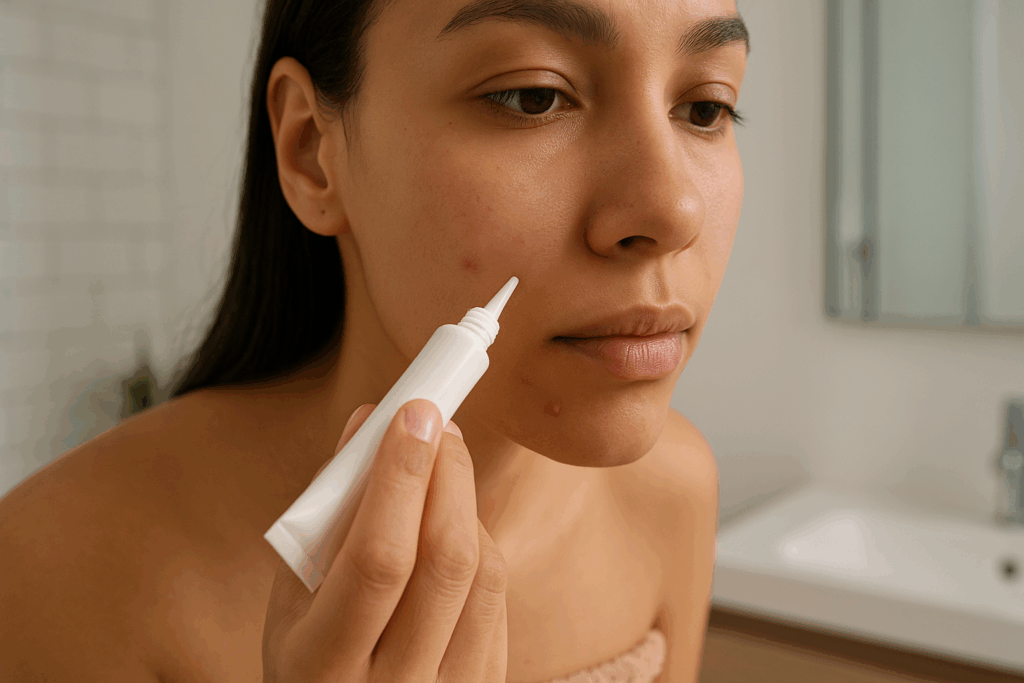
Treating Hormonal Acne: Targeted Solutions
Targeted treatments are essential for effectively managing hormonal acne. This step involves using specialized products that penetrate deeply to address the root causes of breakouts. Ingredients like retinoids, benzoyl peroxide, and salicylic acid are commonly recommended for their ability to reduce inflammation, unclog pores, and promote cell turnover.
Retinoids, derived from vitamin A, are particularly effective for hormonal acne as they accelerate cell turnover and prevent dead skin cells from clogging pores. Prescription options like tretinoin or over-the-counter retinol serums can be integrated into your nighttime routine to boost skin clarity. However, it’s important to use them gradually to prevent irritation, especially if you have sensitive skin.
For daytime treatment, benzoyl peroxide works to kill acne-causing bacteria and reduce inflammation. Its antimicrobial properties make it a powerful ally against persistent breakouts. Salicylic acid, on the other hand, is oil-soluble, allowing it to deeply penetrate pores and clear out sebum and debris. Regular use of these treatments can significantly reduce the frequency and severity of hormonal acne flare-ups.
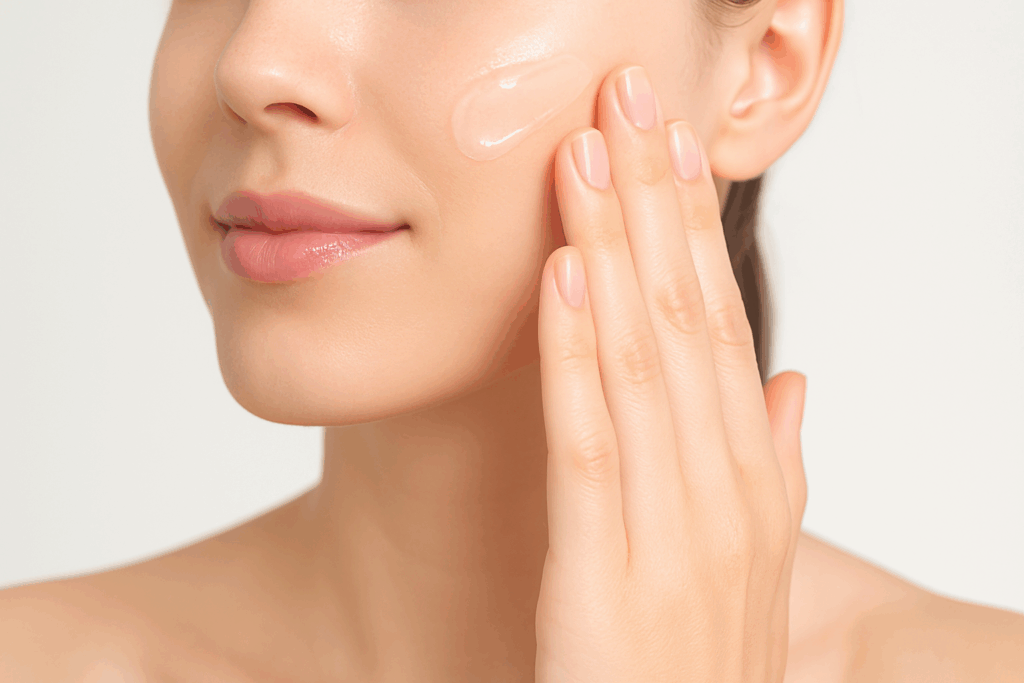
Moisturizing: Hydration Without the Breakouts
One common misconception is that acne-prone skin does not need a moisturizer. On the contrary, proper hydration is crucial for maintaining the skin’s barrier and preventing overproduction of oil. When the skin is dehydrated, it compensates by producing more sebum, which can lead to clogged pores and additional breakouts.
Opt for non-comedogenic moisturizers that are lightweight and oil-free. Ingredients like hyaluronic acid and glycerin hydrate the skin without clogging pores. Gel-based moisturizers are particularly suitable for oily or combination skin types, providing moisture without the greasy residue. Using a moisturizer regularly helps to maintain skin balance and prevent the cycle of oil overproduction that often exacerbates hormonal acne.
Sun Protection: Guarding Against Damage
Sun protection is a non-negotiable part of any effective skin care routine for hormonal acne. Many acne treatments, especially retinoids and exfoliants, can increase the skin’s sensitivity to the sun. Without proper protection, skin is more vulnerable to damage, hyperpigmentation, and even worsening acne scars.
Choose a broad-spectrum sunscreen with at least SPF 30 and apply it daily, regardless of weather conditions. Mineral-based sunscreens with zinc oxide or titanium dioxide are often recommended for acne-prone skin, as they are less likely to clog pores. Applying sunscreen every morning not only protects the skin from UV damage but also helps prevent the dark spots and scars that often follow hormonal breakouts.

Lifestyle Adjustments for Managing Hormonal Acne
While an effective skin care routine for hormonal acne is essential, lifestyle adjustments also play a crucial role in managing breakouts. Hormonal fluctuations are often influenced by factors such as diet, stress, and sleep patterns. By addressing these triggers, you can support your skin’s health and reduce the frequency and severity of acne flare-ups.
Diet and Nutrition: Fueling Clear Skin
What you eat directly impacts your skin’s condition, especially when it comes to hormonal acne. Diets high in processed sugars, dairy, and refined carbohydrates can spike insulin levels, which in turn stimulates oil production. This excess sebum can clog pores, leading to inflammation and breakouts. Consuming a diet rich in whole foods, lean proteins, fruits, and vegetables provides your body with the nutrients it needs to maintain healthy skin.
Anti-inflammatory foods such as omega-3 fatty acids, found in fish and flaxseeds, can also help to balance hormones and reduce skin inflammation. Additionally, zinc and vitamins A and E are known to support skin health and reduce acne-related symptoms. Making these dietary adjustments not only benefits your overall health but also contributes to clearer, healthier skin.
Stress Management: Calming the Cycle
Chronic stress is a well-known trigger for hormonal imbalances that can worsen acne. When you are stressed, your body produces more cortisol, a hormone that can increase oil production and lead to inflamed, clogged pores. Techniques such as meditation, yoga, and regular physical exercise can help manage stress levels and prevent hormonal spikes that trigger breakouts.
Incorporating mindfulness practices into your daily routine can also improve sleep quality, which is another crucial factor in managing hormonal acne. Poor sleep disrupts hormone regulation, leading to increased breakouts. Prioritizing restful sleep and stress-relieving activities can help keep your skin clear and your mind at ease.
Hydration and Sleep: Essential for Skin Recovery
Proper hydration is vital for maintaining healthy skin, especially when dealing with hormonal acne. Drinking enough water helps flush out toxins and keeps your skin hydrated, reducing the likelihood of oil overproduction. Aim for at least eight glasses of water per day, and consider adding herbal teas like green tea, which has anti-inflammatory properties that support skin health.
Equally important is getting enough sleep. During sleep, your skin goes into repair mode, healing damage and reducing inflammation. Prioritizing a regular sleep schedule and ensuring quality rest can make a noticeable difference in your skin’s clarity and overall health. Together with a dedicated skin care routine for hormonal acne, these lifestyle adjustments form a powerful strategy for achieving and maintaining clear skin.
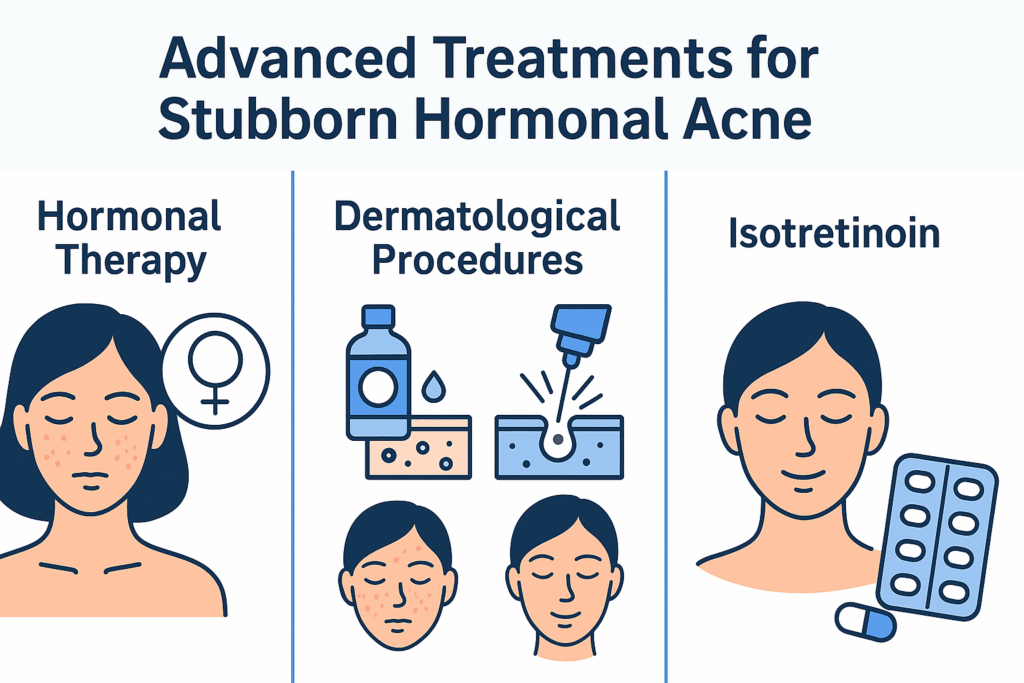
Advanced Treatments for Stubborn Hormonal Acne
While a consistent skin care routine for hormonal acne is often effective for mild to moderate breakouts, some individuals may require advanced treatments to achieve clearer skin. These treatments go beyond typical topical applications, targeting deeper hormonal imbalances and providing more aggressive solutions for persistent acne.
Hormonal Therapy: Balancing from Within
For women who experience severe hormonal acne, hormonal therapy can be a highly effective treatment option. Birth control pills that contain both estrogen and progestin help to regulate hormone levels, reducing the production of androgens that trigger excess oil production. Similarly, anti-androgen medications like spironolactone can block androgen receptors in the skin, effectively reducing oil production and preventing clogged pores.
These therapies are typically prescribed after consulting with a dermatologist who can evaluate your specific hormonal imbalances. While hormonal therapy can significantly improve skin clarity, it may take several months to see full results. Additionally, it’s important to consider potential side effects and discuss these with your healthcare provider before beginning any hormonal treatment.
Dermatological Procedures: Targeted Acne Solutions
In cases of severe or cystic hormonal acne, dermatological procedures may be necessary. Treatments such as chemical peels, microdermabrasion, and laser therapy can provide targeted relief by exfoliating the skin, reducing inflammation, and killing acne-causing bacteria. Chemical peels use concentrated solutions to remove the outer layer of skin, promoting new skin growth and minimizing the appearance of scars.
Laser therapy, on the other hand, targets deeper layers of the skin to kill bacteria and reduce oil production. Procedures like fractional laser resurfacing can also help to fade acne scars and improve skin texture. These treatments are typically performed in a dermatologist’s office and may require multiple sessions for optimal results.
Isotretinoin: A Last Resort for Severe Cases
For the most persistent cases of hormonal acne that do not respond to topical or hormonal treatments, isotretinoin (commonly known as Accutane) may be prescribed. This powerful medication works by drastically reducing oil production and preventing clogged pores. While highly effective, isotretinoin comes with significant potential side effects, including dryness, sensitivity, and the need for regular medical monitoring.
Isotretinoin is usually reserved for severe cases of cystic acne due to its strength and risk profile. It is crucial for patients taking this medication to follow their dermatologist’s guidelines strictly and attend regular check-ups to monitor their health and progress. For many, however, it represents a transformative step toward clearer skin when other treatments have failed.
Preventing Future Breakouts: Maintenance and Long-Term Strategies
Once your skin care routine for hormonal acne starts delivering results, the focus shifts to maintenance and preventing future breakouts. Consistency is key when it comes to keeping hormonal acne at bay. A well-structured regimen, combined with lifestyle adjustments, helps maintain clear skin and prevents the resurgence of stubborn breakouts.
Consistency is Crucial
One of the most important aspects of managing hormonal acne is consistency. Your skin needs time to adjust to products and treatments, and abrupt changes can disrupt progress. Stick to your regimen for at least six to eight weeks before assessing its effectiveness. This commitment allows your skin to fully benefit from the active ingredients in your cleansers, exfoliants, and treatments.
Avoid experimenting with too many new products simultaneously, as this can trigger irritation and worsen breakouts. Instead, introduce one new product at a time, monitoring your skin’s response before making further adjustments. This methodical approach minimizes the risk of adverse reactions and supports a stable, clear complexion.
Regular Dermatological Check-Ups
Even with a solid routine, it’s important to visit a dermatologist for regular check-ups. A professional assessment can identify underlying issues, recommend adjustments, and provide treatments that go beyond over-the-counter options. Dermatologists can also monitor changes in your skin, ensuring that your routine remains effective as your skin evolves.
Annual or bi-annual visits are typically sufficient for maintenance, but more frequent check-ups may be necessary if you experience frequent flare-ups or changes in your skin condition. This proactive approach helps catch potential problems early and allows for timely intervention to prevent severe breakouts.
Adapting to Life Changes
Hormonal acne can be influenced by life changes such as pregnancy, menopause, or significant shifts in lifestyle. During these times, hormonal fluctuations can trigger unexpected breakouts. Adapting your skin care routine to accommodate these changes helps maintain clarity and prevent prolonged flare-ups.
For example, pregnancy often brings about changes in hormone levels that may exacerbate acne. Consulting with a dermatologist to adjust your routine can help mitigate these effects while ensuring product safety for both mother and baby. Similarly, during menopause, hormonal shifts can also lead to new skin challenges that require tailored skin care solutions.
Staying proactive with your skin care routine for hormonal acne, along with regular lifestyle adjustments, sets the foundation for long-term skin health. Clear skin is not just about the right products—it’s about commitment, adaptation, and understanding how your skin responds to hormonal changes.
Frequently Asked Questions About Skin Care Routine for Hormonal Acne
1. What is the best skincare routine for hormonal acne?
The best skincare routine for hormonal acne focuses on balancing oil production, reducing inflammation, and preventing clogged pores. This involves using a gentle cleanser to remove impurities without stripping the skin’s natural barrier, followed by a salicylic acid or benzoyl peroxide treatment to target acne-causing bacteria. Exfoliation with alpha hydroxy acids (AHAs) or beta hydroxy acids (BHAs) helps to clear dead skin cells and promote cell turnover. Moisturizing is crucial, even for acne-prone skin, as it prevents the skin from overcompensating with excess oil production. Lastly, sun protection with a non-comedogenic sunscreen helps prevent hyperpigmentation and reduces scarring caused by hormonal breakouts.
2. How does a hormonal acne skincare routine differ from a regular acne routine?
A hormonal acne skincare routine is specifically designed to address the internal triggers of acne that are linked to hormonal fluctuations, such as menstruation, pregnancy, and stress. Unlike regular acne routines that mainly target surface-level oil and bacteria, a hormonal acne skincare routine often incorporates treatments that regulate oil production from within, like hormonal therapy or anti-androgen medications. Additionally, products are chosen for their anti-inflammatory and sebum-regulating properties, with ingredients like niacinamide, zinc, and green tea extract being popular choices. This approach helps prevent deep, cystic breakouts that are common with hormonal acne, whereas a standard routine may not penetrate deeply enough to address these root causes.
3. Can diet really influence my skin care routine for hormonal acne?
Yes, diet can have a significant impact on hormonal acne. Consuming high-glycemic foods like white bread, sugary snacks, and processed carbohydrates can spike insulin levels, which in turn increases oil production and inflammation in the skin. On the other hand, incorporating foods rich in omega-3 fatty acids, such as salmon and flaxseeds, can help reduce inflammation and balance hormones. Additionally, cutting back on dairy products may reduce breakouts for some people, as dairy is known to affect hormone levels. A well-balanced diet that prioritizes whole foods and minimizes processed sugars can support a more effective skin care routine for hormonal acne.
4. What role does stress play in hormonal acne, and how can I adjust my skincare routine?
Stress is a major contributor to hormonal acne because it triggers the release of cortisol, which can increase oil production and inflammation in the skin. To manage stress-related breakouts, it is important to incorporate calming practices such as meditation, regular exercise, and sufficient sleep into your daily routine. In terms of skincare, consider using products with anti-inflammatory ingredients like chamomile, green tea, and niacinamide. A consistent skin care routine for hormonal acne that also prioritizes stress reduction can significantly improve skin clarity and reduce flare-ups over time.
5. Are natural remedies effective for a hormonal acne skincare routine?
Natural remedies can be beneficial when integrated into a hormonal acne skincare routine, although they are typically more effective as supportive measures rather than primary treatments. Ingredients like tea tree oil, aloe vera, and green tea extract are known for their anti-inflammatory and antibacterial properties. Herbal teas such as spearmint have also been shown to reduce androgen levels, which are often elevated in hormonal acne sufferers. While natural remedies can support clearer skin, they are best used alongside proven medical treatments for optimal results.
6. How often should I exfoliate in a hormonal acne skincare routine?
Exfoliating two to three times a week is generally recommended for those with hormonal acne. Over-exfoliating can irritate the skin and disrupt its natural barrier, leading to increased oil production and more breakouts. Opt for chemical exfoliants like salicylic acid or lactic acid rather than physical scrubs, which can cause micro-tears and exacerbate inflammation. Consistency is key; a well-structured skin care routine for hormonal acne that includes regular, gentle exfoliation helps keep pores clear and prevents the buildup of dead skin cells that can lead to blockages.
7. Can hormonal acne be completely cured with a skincare routine?
While a well-crafted skincare routine for hormonal acne can dramatically reduce the frequency and severity of breakouts, it may not completely cure the condition. Hormonal acne is primarily driven by internal imbalances, which means that topical treatments alone may not be enough. For lasting results, many people also explore hormonal therapy, lifestyle changes, and dietary adjustments. Regular dermatological assessments can help in fine-tuning both topical treatments and internal approaches for optimal results.
8. Is it safe to use retinoids in a hormonal acne skincare routine?
Yes, retinoids are safe and effective for use in a hormonal acne skincare routine, provided they are used correctly. Retinoids accelerate skin cell turnover, prevent clogged pores, and reduce inflammation. It is crucial to start slowly—perhaps once or twice a week—and build up to more frequent use to avoid irritation. Additionally, retinoids increase sun sensitivity, so using a high-SPF, non-comedogenic sunscreen during the day is essential to protect the skin.
9. Should I change my skincare routine during my menstrual cycle?
Many women find that their hormonal acne flares up around their menstrual cycle due to shifts in hormone levels. To counteract this, you might consider adjusting your routine by incorporating more anti-inflammatory ingredients and oil-controlling treatments during this time. Using a salicylic acid cleanser, a clay mask, and spot treatments can help manage breakouts effectively. Tracking your cycle and proactively adjusting your hormonal acne skincare routine can help mitigate flare-ups before they intensify.
10. What lifestyle changes can support my hormonal acne skincare routine?
Several lifestyle changes can complement a hormonal acne skincare routine. Prioritizing quality sleep, reducing sugar intake, and engaging in regular exercise help regulate hormone levels. Additionally, managing stress through mindfulness practices can reduce cortisol spikes, which are known to worsen acne. These lifestyle shifts, combined with a consistent skincare routine, can significantly enhance your skin’s clarity and resilience.
Conclusion: Achieving Clear Skin Through a Dedicated Routine
Managing hormonal acne requires a comprehensive approach that extends beyond basic skin care. By building an effective skin care routine for hormonal acne, you address not only the surface-level symptoms but also the underlying hormonal imbalances that trigger persistent breakouts. Each step—from cleansing and exfoliating to moisturizing and treating—plays a crucial role in maintaining clarity and preventing future flare-ups.
Equally important are the lifestyle adjustments that support skin health. A balanced diet, stress management, and proper hydration contribute to hormonal balance and clearer skin. For more stubborn cases, advanced treatments such as hormonal therapy, dermatological procedures, and even isotretinoin provide powerful options to reclaim skin health.
Consistency remains the cornerstone of any successful skin care routine. Staying committed to your regimen, making thoughtful lifestyle choices, and consulting with dermatological experts ensures that your skin remains clear and resilient against hormonal disruptions. With the right strategies, clearer, healthier skin is entirely achievable, empowering you to face each day with confidence and radiance.
Further Reading:
The Best Skincare Routine for Hormonal Acne